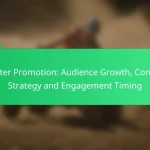YouTube Music employs sophisticated algorithms to tailor music recommendations based on individual user behavior and preferences, enhancing the overall listening experience. Visibility on the platform is shaped by factors such as search optimization and engagement rates, which are crucial for artists seeking to expand their reach. By promoting high-quality content and fostering connections within the music community, creators can significantly boost engagement and visibility on YouTube Music.
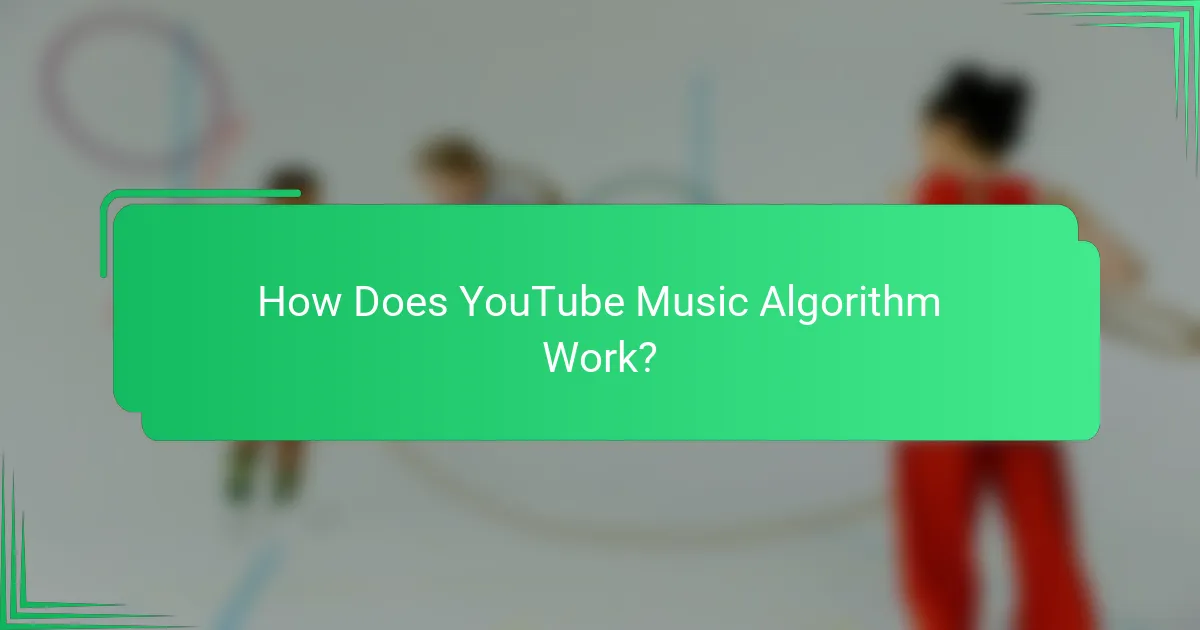
How Does YouTube Music Algorithm Work?
The YouTube Music algorithm curates music recommendations based on user behavior, preferences, and engagement patterns. It analyzes listening history, likes, and interactions to deliver personalized content that enhances user experience.
Personalized recommendations
YouTube Music’s personalized recommendations are driven by algorithms that assess individual listening habits. The system considers factors like previously played songs, liked tracks, and even the time spent on specific genres. This data helps create tailored playlists that align with user tastes.
To maximize the effectiveness of personalized recommendations, users should regularly engage with the platform by liking songs and creating playlists. This active participation signals preferences more clearly to the algorithm, improving the relevance of suggested music.
Trending playlists
Trending playlists on YouTube Music showcase popular tracks that are currently gaining traction among users. These playlists are updated frequently, reflecting real-time data on what is being streamed and shared across the platform.
Users can explore trending playlists to discover new music and artists that are resonating with a broader audience. Engaging with these playlists can also enhance the algorithm’s understanding of a user’s preferences, leading to better recommendations over time.
User engagement metrics
User engagement metrics play a crucial role in how the YouTube Music algorithm functions. Metrics such as skips, likes, shares, and the duration of song plays inform the algorithm about which tracks are resonating with listeners.
To improve visibility on the platform, artists and content creators should focus on increasing engagement by encouraging listeners to interact with their music. Simple strategies include asking fans to like or share songs, which can significantly influence how the algorithm ranks their content.
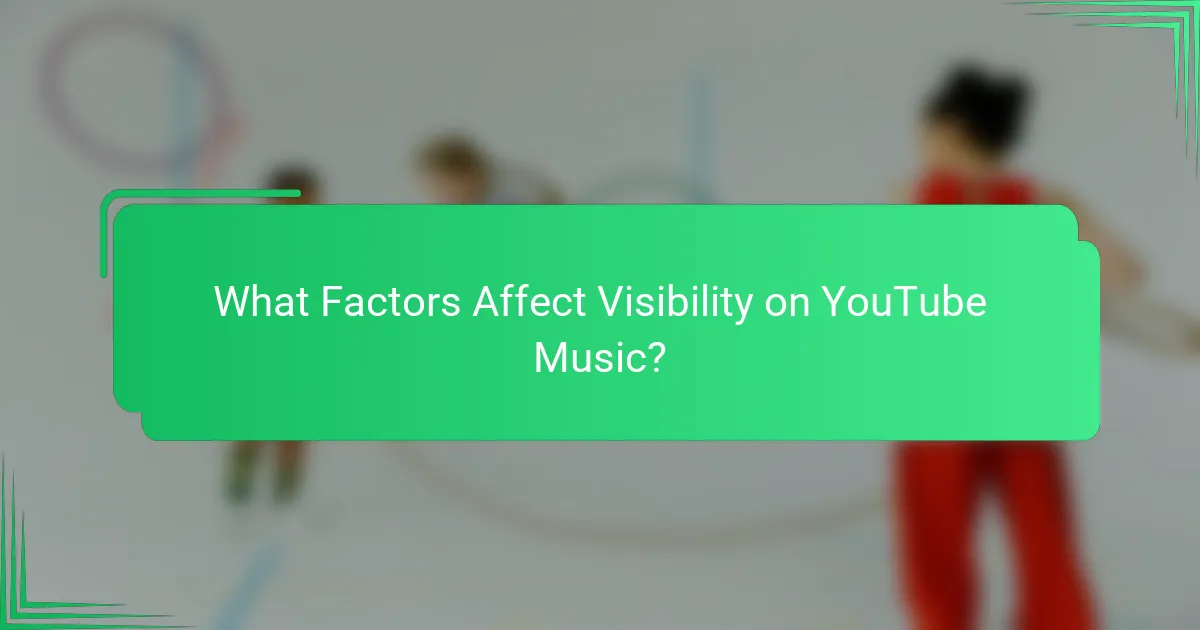
What Factors Affect Visibility on YouTube Music?
Visibility on YouTube Music is influenced by several key factors, including search optimization, playlist placements, and engagement rates. Understanding these elements can help artists and content creators enhance their presence on the platform.
Search optimization
Search optimization involves tailoring your content to improve its discoverability on YouTube Music. This includes using relevant keywords in your titles, descriptions, and tags to align with user searches. Aim for a clear and concise title that reflects the song or artist, as this can significantly impact search results.
Consider utilizing tools like Google Trends or YouTube’s search suggestions to identify popular keywords related to your music. Regularly updating your metadata can also keep your content relevant and improve its chances of appearing in search results.
Playlist placements
Getting your music featured in playlists can dramatically increase visibility on YouTube Music. Playlists often serve as a primary way users discover new songs, so targeting popular playlists that align with your genre is crucial. Research playlists that cater to your audience and reach out to curators for potential inclusion.
Additionally, creating your own playlists that include your tracks alongside similar artists can foster engagement and attract listeners. This strategy not only enhances visibility but also builds a community around your music.
Engagement rates
Engagement rates, which include likes, comments, shares, and watch time, play a vital role in determining how often your content is promoted on YouTube Music. Higher engagement signals to the algorithm that your music resonates with listeners, leading to increased visibility. Encourage your audience to interact with your content by asking questions or prompting discussions in the comments.
Monitoring your engagement metrics can help you understand what content works best. Focus on creating high-quality visuals and compelling narratives that encourage users to engage, as this can significantly boost your track’s performance on the platform.

How to Increase Engagement on YouTube Music?
To increase engagement on YouTube Music, focus on promoting your content effectively, creating high-quality material, and building connections with other artists. These strategies can enhance visibility and encourage more interaction from listeners.
Utilizing social media
Leveraging social media platforms is crucial for driving engagement on YouTube Music. Share your tracks, playlists, and music videos across channels like Instagram, Twitter, and Facebook to reach a broader audience. Use engaging visuals and snippets to capture attention and encourage followers to check out your YouTube Music content.
Consider creating dedicated posts or stories that highlight your latest releases, behind-the-scenes content, or upcoming events. Engaging with your audience through comments and direct messages can also foster a sense of community and loyalty.
Creating compelling content
Compelling content is key to retaining listeners on YouTube Music. Focus on producing high-quality audio and visually appealing videos that resonate with your target audience. Experiment with different formats, such as lyric videos, live performances, or music tutorials, to keep your content fresh and interesting.
Additionally, consider the use of storytelling in your music or video descriptions to create a deeper connection with your audience. Engaging narratives can encourage listeners to share your content, further increasing visibility.
Collaborating with artists
Collaborating with other artists can significantly boost your engagement on YouTube Music. Partnering with musicians who have a similar or larger following can introduce your work to new audiences. Joint projects, such as features or remixes, can create buzz and attract attention from both fan bases.
When collaborating, ensure that both artists promote the content across their platforms to maximize reach. This mutual support can lead to increased views, likes, and shares, enhancing overall engagement on your tracks.
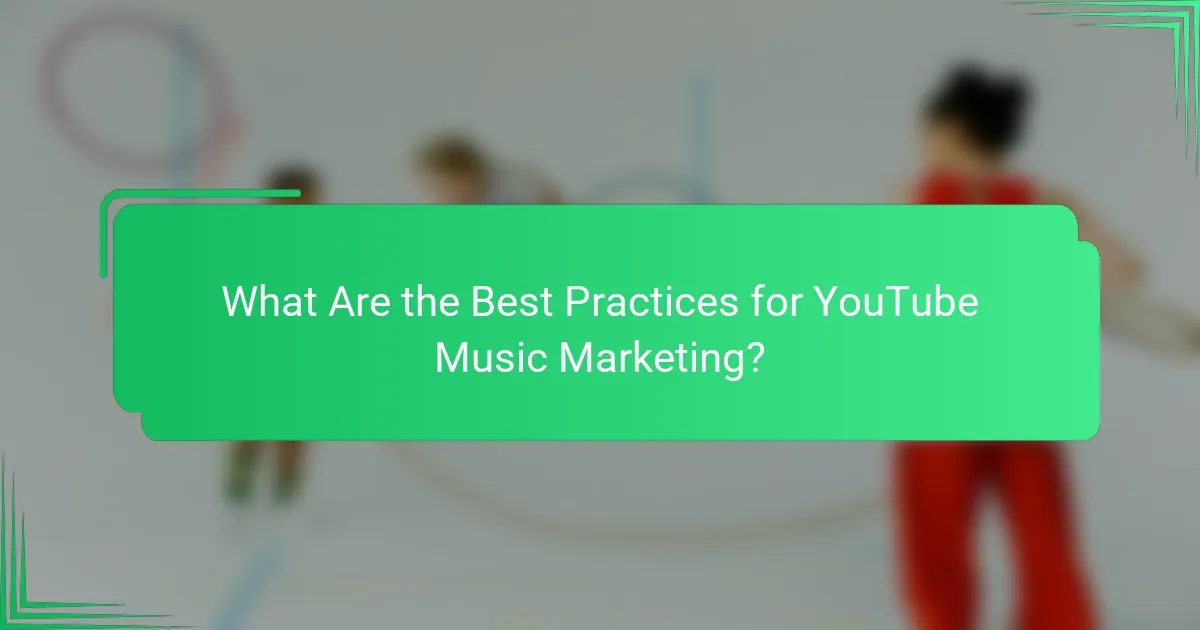
What Are the Best Practices for YouTube Music Marketing?
Effective YouTube Music marketing hinges on understanding your audience, scheduling content strategically, and leveraging analytics tools. These practices enhance visibility and engagement, ultimately driving growth for artists and labels.
Target audience analysis
Identifying your target audience is crucial for tailoring your content and marketing strategies. Research demographics, interests, and listening habits to create a profile of your ideal listener. This can include age, location, and genre preferences.
Utilize surveys, social media insights, and YouTube analytics to gather data about your audience. Knowing who your fans are allows you to create content that resonates, increasing the likelihood of engagement and shares.
Content scheduling
Consistent content scheduling is essential for maintaining audience interest and maximizing engagement. Plan your releases around key dates, such as holidays or music festivals, to capitalize on heightened listener activity.
Consider using a content calendar to organize your uploads. Aim for a regular posting frequency, whether weekly or bi-weekly, to keep your audience engaged. Experiment with different times and days to find when your audience is most active.
Utilizing analytics tools
Analytics tools provide valuable insights into how your content is performing and how your audience is interacting with it. YouTube Studio offers metrics such as watch time, audience retention, and demographics, which can inform your marketing decisions.
Regularly review these analytics to identify trends and adjust your strategies accordingly. For instance, if certain types of videos generate more engagement, consider producing similar content. This data-driven approach helps optimize your marketing efforts and improve overall visibility.
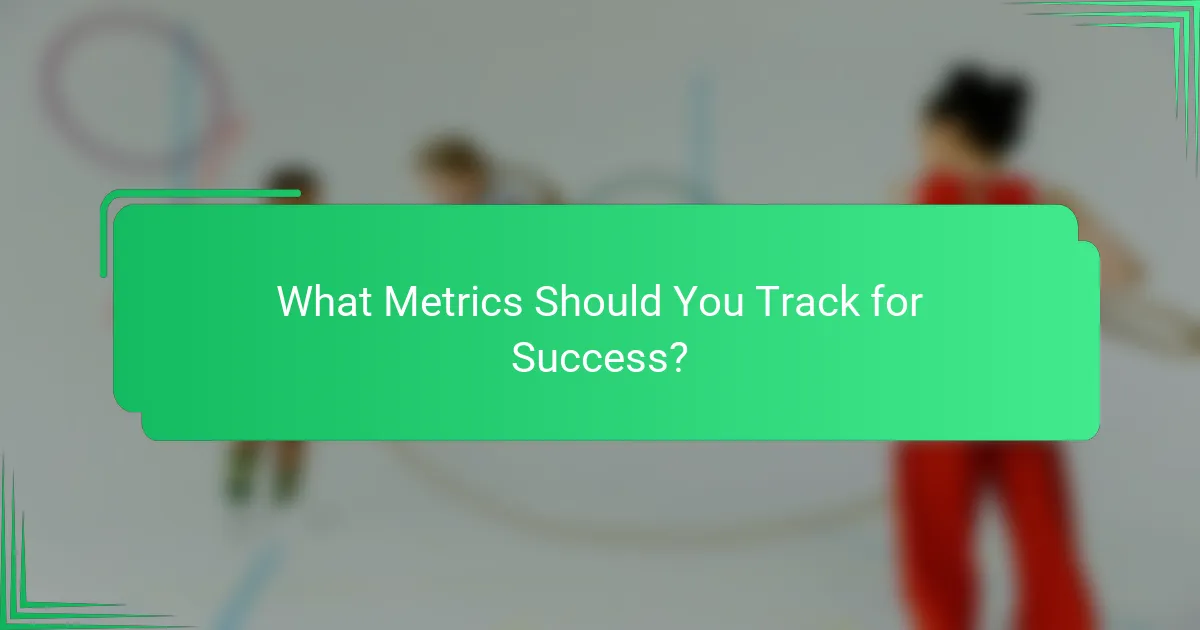
What Metrics Should You Track for Success?
To achieve success on YouTube Music, focus on key metrics that reflect your content’s performance and audience engagement. Tracking play counts and subscriber growth provides valuable insights into how well your music resonates with listeners and how effectively you are expanding your audience.
Play counts
Play counts indicate how many times your tracks have been streamed, serving as a primary measure of popularity. High play counts suggest that your music is appealing to listeners, while low counts may indicate a need for better promotion or content quality.
Consider setting benchmarks based on genre averages or similar artists. For instance, a new track might aim for a few hundred to several thousand plays within the first month, depending on your existing fan base and marketing efforts.
To improve play counts, promote your music across social media platforms, collaborate with other artists, and engage with your audience through comments and live sessions. Avoid relying solely on organic growth; consider targeted advertising to reach new listeners.
Subscriber growth
Subscriber growth reflects the number of users who choose to follow your channel, indicating their interest in your future releases. A steady increase in subscribers is crucial for building a loyal fan base and enhancing your visibility on the platform.
Track your subscriber growth monthly and analyze spikes or drops in numbers. For example, a successful music video release or a viral moment can lead to a significant increase in subscribers, while inactivity may result in stagnation.
To foster subscriber growth, consistently release high-quality content, engage with your audience through polls or Q&A sessions, and encourage viewers to subscribe at the end of your videos. Avoid neglecting your channel; regular updates keep your audience engaged and attract new subscribers.

